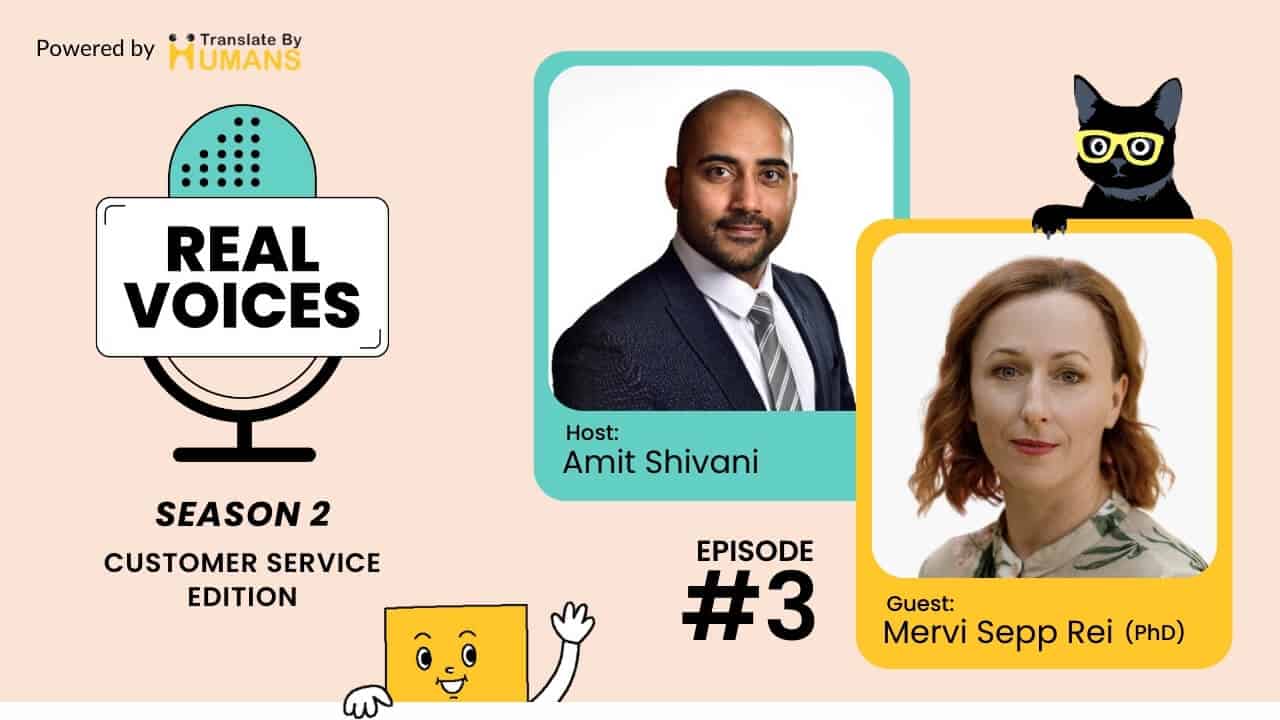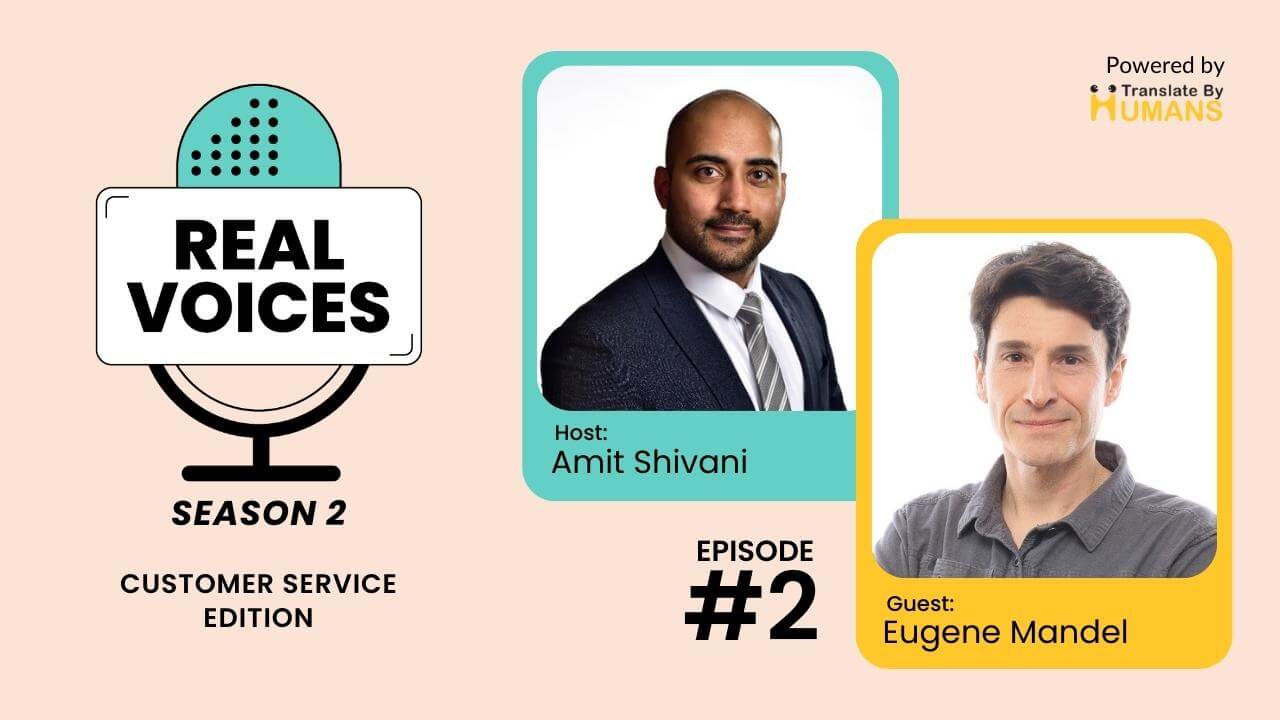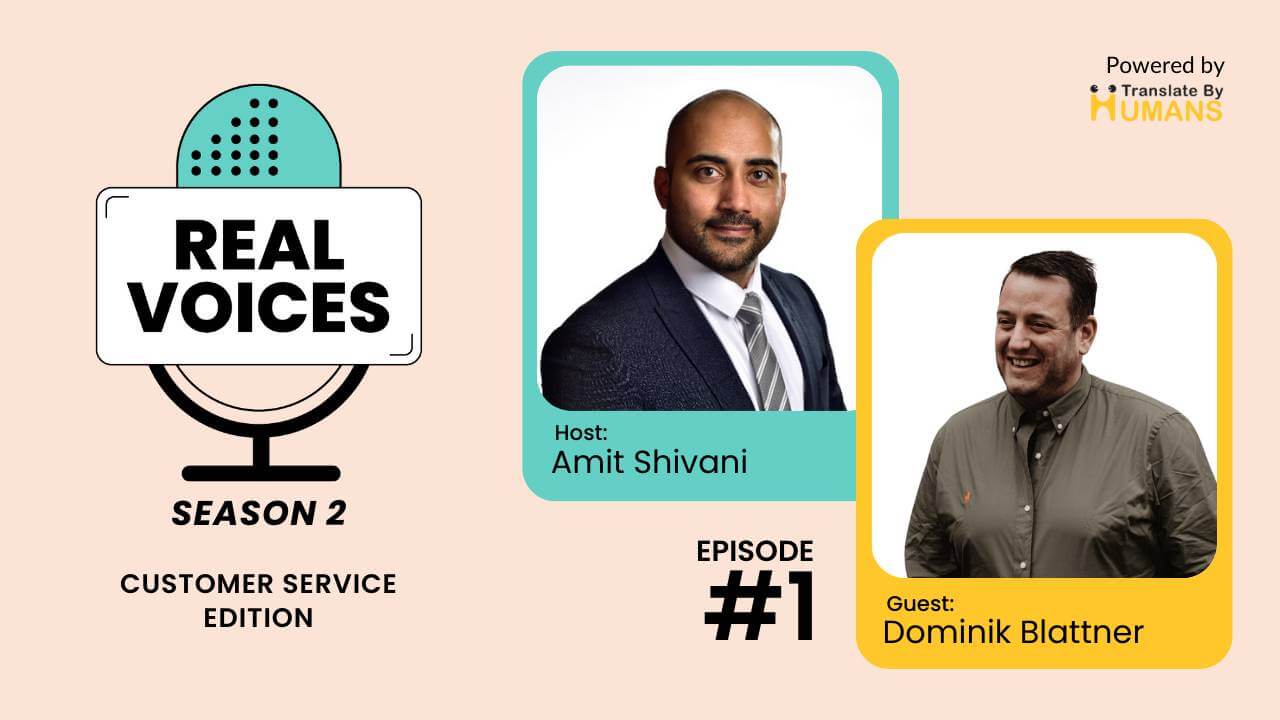Home » Real Voices » Can AI and Human Collaboration Redefine Customer Communication? In Conversation with Mervi from Klaus
Can AI and Human Collaboration Redefine Customer Communication? In Conversation with Mervi from Klaus
Listen on :
Our Guest

Mervi Sepp Rei (PhD)
Head of ML & Data, Klaus
Our Host

Amit Shivani
Director of Sales, Lingpad
In this episode of “Real Voices – Customer Service Season 2,” the exceptional Mervi Sepp Rei(PhD), the Head of Machine Learning and Data at Klaus, joins us.
Hosted by Amit, Director of Sales at Lingpad, this promises to be a roller coaster of innovation and insights. Join us as we explore Mervi’s journey from the world of physics to pioneering AI solutions and delve into the intricate dance between human cognition and artificial intelligence.
Key Takeaways:
Key Insights:
Let's start the podcast by discussing a bit about your background in the industry.
Hi! I’m Mervi, the head of Machine Learning and Data at Klaus. My team and I are on a mission to revolutionise customer service. We harness the power of AI to help businesses measure the quality of their contact center interactions. With Klaus, we’re not just building a tool but crafting a solution that trains agents, enhances customer experiences, and provides invaluable insights for business growth.
Absolutely! Before diving into Klaus and the product, let's rewind a bit. I(Amit) crossed paths with Mervi at a Klaus-organized breakfast in London, where our professional journey kicked off.
Now, Mervi, as the Head of Machine Learning(ML) and Data, your career trajectory might not have been your typical childhood dream. No one really envisions growing up to be knee-deep in machine learning, right? What paved the way to head up ML at Klaus?
I’m a physicist turned model-builder extraordinaire. With a Ph.D. in applied physics, I crafted mathematical marvels simulating everything from light in photonic crystals to rogue waves attacking oil tankers. There is no machine learning, just finely tuned models. I waltzed into contact centers in the business realm, weaving reporting solutions and mastering ETL. Then came the data science wave, and I surfed it, crafting my first ML model that turbocharged a Finnish bank’s email sorting game. Agents were thrilled, customers amazed, and my startup journey kicked off. The joy of making a real impact? Priceless.
Thrilled to have a scientist on the podcast for the first time! Today, we're diving into data with our guest from Klaus. Navigating through heaps of information can be overwhelming, and many managers face the challenge of analysis paralysis. That's where Klaus steps in, bringing a scientist's touch to sift through the data chaos.
So, Mervi, tell us a bit about Klaus and what you currently do at Klaus. And how does someone in machine learning fit into the product that you're doing?
You brought up a great point! With the massive scale of tasks, someone can't review every interaction manually. Imagine analyzing 100 conversations daily – no one has time for that. Plus, relying on a small sample might mislead managers into thinking everything's fine when they've only seen the tip of the iceberg.
Imagine you’ve only explored 2% of a vast landscape. There’s that lingering feeling: What else might I be missing? Enter simpler tasks that are easily measured, allowing you to rank your agents. Now, you can decide where to dive deep or have a human check. Machines can automate, but they can’t decide how to change. Human cognitive abilities are crucial for the transition to digest and translate data into meaningful action.
As we delve into the intersection of human cognition and artificial intelligence, a pressing question arises: How accurate is AI? Whether you're a customer service leader or an agent, the concern lingers. AI is, after all, a product of algorithms and software. But when we gauge accuracy, what's the benchmark? What's your take on this pivotal measure?
In crafting our automatic evaluators, our approach hinges on measuring accuracy. We built a QA solution for the specific categories evaluating empathy, solution, tone, grammar, grading, and closing. And now readability. These are all categories that we see people checking manually. So we have this human point of truth, like this ground truth that we can compare ourselves against. And that gives us confidence in how well this thing is performing overall. And, with this going into this 100% coverage base doing things automatically, it also means that you have to adjust yourself a little bit to some different set of KPIs like this.
When people talk about machine learning accuracy, there’s another facet. Do we measure human accuracy in subjective tasks? Surprisingly, humans differ quite a bit. Take sentiment analysis; humans only agree 80% of the time. So, machines can’t beat that, but we rarely consider it when assessing AI accuracy. That’s where our dual-point measurement system comes in. First, we compare machine performance to what humans manually did. It’s a fundamental point. Klaus insists on grounding machines in human actions. Then, with auto QA, we track how AI evaluations align with specific human judgments using metrics like acceptance rate. If our machine’s hitting close to that 80%, and you factor in the sheer scale of automation (we’re talking a 250 times boost), even a 65-75% agreement becomes remarkably good. That’s the game-changer we’ve observed in some customer scenarios.
Okay, it's not about letting the machine roam freely but having a human touchstone. As the machine suggests, the human refines, and together, they create the perfect harmony, right?
Certainly! The human-machine connection is vital, ensuring a symbiotic relationship. Automation should complement, not replace, human involvement, fostering trust and reliability.
Given the widespread fear and skepticism, why do some folks hesitate to embrace AI despite its evident benefits?
Humans often want machines to solve the most challenging problems they face. It stems from the idea that if a problem is complex, maybe machines can handle it. However, not all complicated issues are suitable for machines. It’s like handing over decision-making power to something that doesn’t face consequences for making a wrong choice. This is especially risky in areas like customer communication or career paths, where a machine might not fully understand the impact of its decisions.
Negative assessments, for example, can have serious consequences, and it’s easy to think it’s okay if a machine does it. But we should always double-check with humans because subjective reasons and various factors are at play. It’s crucial to accept that machines can’t handle everything, but they can address a significant portion of a problem, making the overall task easier for humans. The uneasiness often comes from the realization that machines shouldn’t make decisions in certain areas.
Absolutely, you just gave us the core message of the podcast: Avoid entrusting decisions to someone with nothing to lose.
Okay, next thing, we are a multilingual company promoting multilingual messaging chats. How does Klaus deal with multilingual messages?
Certainly! Our linguistic analysis pipeline is handling a diverse clientele speaking over 100 languages. This pipeline boasts 11 distinct language models tailored for specific linguistic nuances. We acknowledge that not all languages are treated equally, as our large language models shine in the top 20 languages, perform acceptably in 53 others, and struggle with the remaining 49. Realistically, we recognize that popular languages receive better coverage while others may not be as well-represented.
In navigating this landscape, our philosophy aligns with letting the machine take the reins when it’s confident in making accurate decisions. By doing so, we ensure that the process remains effective without causing harm or bias. It’s all about letting the machine operate within its strengths, benefitting everyone involved without unnecessary drawbacks.
I genuinely appreciate your answers, Mervi. Before we wrap up, I'm up for some "Would You Rather" fun! Let's dive in.
Live in Narnia or attend school at Hogwarts?
Without a doubt, I’d choose to live in Narnia.
Be invisible or have the ability to fly?
Tough one! Today, I’d pick flying, but I might choose differently on another day.
Lived 100 years in the past or 100 years in the future?
Future all the way; I’m all about what’s to come.
Win $1 million today or wait ten years for $10 million?
I’m all about the future, so I’d wait for the $10 million.
Live in a house with no electricity or no running water?
Considering I’m in chilly Estonia at -9 degrees, I’d go for electricity.
Thanks for the fun round! It's been a blast chatting with you.
And there you have it, folks! A journey through the realms of data, AI accuracy, and the multilingual magic of Klaus. A massive thanks to Mervi for sharing her insights and navigating us through the fascinating landscape of machine learning. Until next time, this is “Real Voices – Customer Service Season 2,” signing off. Stay tuned for more real voices shaping the future of customer service in our upcoming episodes!
Share this video:



